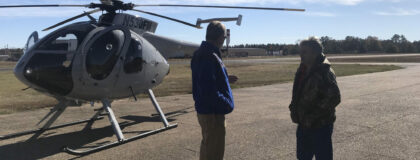As an insurance producer, it is important to have a deep understanding of the unique needs of your clients. For a pilot who owns their aircraft, proper maintenance of the aircraft is critical to ensure longevity and safety. This blog post will explore the top maintenance for keeping an aircraft in peak condition. We’ll also highlight Prime Insurance Company’s expertise in providing liability insurance coverage for pilots.
Top 4 Maintenance Tips for Keeping an Aircraft in Peak Condition
- Regular Maintenance Checks
Regular maintenance checks are essential to identify and address potential issues before they become major problems. As each airplane model is different, it is preferred to refer to the maintenance manual provided by the manufacturer before performing maintenance. Here are some example topics, some of which may be specific to the airplane type:
- Oil changes and oil analyses to monitor engine health and hidden issues. It depends on the airplane type, but changing oil between every 25 and 50 hours of flight time is a standard practice.
- Fuel systems and exhaust systems inspections to ensure proper ventilation and fuel flow. Fuel samples can be tested for impurities by using a visual inspection or a fuel sampler.
- Engine compression and valve checks to measure engine efficiency. The results of these inspections should be recorded, and any deviation from standard values should be reported to the manufacturer’s maintenance team.
- Structural inspection during which the aircraft inspection covers removed to check the internal structures (bulkheads, fuselage assistance construction, etc.) to detect any structural damages due to wear and age.
- Adherence to Manufacturer Recommendations:
Manufacturers provide specific instructions and guidelines for maintaining and servicing their aircraft models. It is important to note that following these recommendations ensures compliance with warranty requirements and optimum performance. Below are some of the recommendations:
- Following the recommended maintenance schedule rigorously. This is the responsibility of the pilot’s designated mechanic to oversee.
- Ensuring that any replacement parts installed are the correct ones, approved by the manufacturer.
- Keeping a log of maintenance activities to ensure that all maintenance goals are met and that the manufacturer’s requirements are documented.
- Preventive Measures for Aircraft Storage
When an aircraft is not in use, proper storage is essential to protect it from weather, pests, and other potential hazards. Here are some preventive measures for aircraft storage:
- Aircraft covers that are made of durable yet light material.
- Secure and enclosed storage, with crack-free floors and walls and no stagnant water to avoid corrosion.
- Installing a dehumidifier (or humidity sensor) to regulate and maintain the correct moisture level inside the enclosure.
- Conducting regular inspections (e.g., monthly) to check for signs of damage like cracks, fragile paint, etc.
- Training and Documentation
Documentation of maintenance records is crucial for insurance purposes. Along with the documentation, training for pilots and maintenance technicians is critical to ensure that they stay up-to-date with the latest regulations and best practices. Here are some crucial documentation and training tips:
- Pilots should take recurrent training courses to remain informed on new laws, regulations, and other crucial issues.
- Before any maintenance, technicians should review the pilot and aircraft documentation to avoid errors. This includes details on the aircraft’s make, model, and year.
- The maintenance record must be kept accurate, detailed, and current. Any work done must be signed off by the technician who performed that work.
The Importance of Pilot Insurance
Alongside implementing the above maintenance measures, it is equally important for a pilot who owns their aircraft to have adequate insurance coverage. This aviation insurance provides liability protection in the event of an accident, damages, or injuries that may occur during flight operations. As an insurance producer, it is important to guide pilot clients in obtaining reliable coverage.
For over 40 years, Prime Insurance Company has been a reliable resource for insurance producers and their clients. We understand the unique risks involved with piloting and have specialized in providing liability insurance coverage that meets those needs. Prime Insurance Company has extensive experience in aviation insurance, and is rated “A” (Excellent) by A.M Best.
Maintenance Tips for Keeping an Aircraft in Peak Condition: Key Takeaways
By following the top maintenance tips outlined in this blog post with regularization, pilots who own their aircraft can help ensure that their assets remain in peak condition. Educating clients on the importance of ongoing maintenance ensures that their planes are kept in top condition, thereby improving their safety and the longevity of their investment. Additionally, offering pilots comprehensive aviation insurance coverage, such as that provided by Prime Insurance Company, ensures that they are protected against potential liabilities that may arise while operating their aircraft.
If you’d like to get a quote, head over to our Pilot Liability Insurance page.


